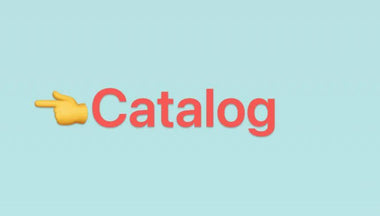What Customization Files and Specifications Do I Need to Provide?
To determine the customization files and specifications you need to provide, first clarify your product or system type. Physical products require design files and production specs, while software demands functional specs and configuration files. Clear communication with suppliers like JCFLOW ensures you meet requirements for successful customization.
How Do I Determine the Required Files for Customizing Physical Products?
For physical products such as custom silicone beads, packaging, or components, you typically need to provide vector design files (.AI or .EPS) for graphics, or CAD files (.STEP) for 3D models. Additionally, specify product dimensions, color codes (Pantone/CMYK), material types (e.g., food-grade silicone), and any functional or assembly instructions to guide manufacturing.
JCFLOW recommends submitting detailed artwork and clear sizing to avoid delays and ensure precision.
What Production Specifications Should I Include for Custom Manufacturing?
Production specs include exact bead shape, size, hole diameter, material grade, color specifications, tolerance limits, and any finishing requirements. You may also need to provide a Bill of Materials (BOM) or sample pieces for quality comparisons. Defining these precisely helps manufacturers like JCFLOW maintain product quality and meet regulatory standards.
These details streamline production and minimize costly errors.
Which Software or Virtual System Specification Files Are Needed for Customization?
In software and virtual system customization, documentation such as functional requirement documents, user stories, and configuration files (YAML, XML) are needed. For UI customization, provide design assets like wireframes or icons in preferred formats. If customizing VMs or dev environments, specify OS settings, scripts, and security credentials clearly.
Clear specs accelerate development and avoid rework.
Why Is Clarifying Timeline, Budget, and Approval Process Critical?
Establishing project timeline and budget constraints upfront helps suppliers schedule and allocate resources efficiently. Knowing who approves at various stages ensures smooth progress and timely feedback. Clear communication channels prevent misunderstandings and accelerate the customization cycle, essential when working with companies like JCFLOW.
Transparency fosters trust and project success.
When Should I Provide Physical Samples Versus Digital Files?
Physical samples are beneficial when texture, material feel, or complex 3D components need to be matched. Digital files are sufficient when designs involve standard shapes or prints. For silicone beads, JCFLOW often prefers digital CAD and vector files but may request samples for unique molds or finishes.
Use samples to guarantee the end product meets tactile and aesthetic expectations.
Where Can I Find Guidance on File Formats and Specifications?
Manufacturers and suppliers usually provide detailed customization guidelines on their websites or in pre-order consultations. JCFLOW offers clear instructions on file submission types and spec sheets tailored to silicone bead customization projects. Always confirm requirements before preparing your files.
Following provided specs reduces revisions and accelerates production.
How Do I Ensure My Customization Files Are Industry-Compatible?
Use widely accepted file formats: vector (.AI, .EPS) for graphics, CAD (.STEP) for 3D models, and standard color codes like Pantone for colors. Validate your files in design software to check for errors. Collaboration tools and sample reviews can help align expectations.
Partnering with experienced suppliers like JCFLOW ensures your files meet industry standards.
Has JCFLOW Simplified the Custom Bead Specification Process?
JCFLOW streamlines custom bead orders by providing comprehensive specification templates, expert design consultation, and dual-location support for quick feedback. Their factory-direct model facilitates clear file format requirements and practical guidance to help clients prepare precise, production-ready files.
This integrated approach makes customization accessible even for first-time customers.
Customization File and Specification Checklist
| Item | Recommended Format/Detail | Notes |
|---|---|---|
| Digital Art/Logo | Vector (.AI, .EPS) | Scalable without losing quality |
| 3D Models | CAD (.STEP) | Needed for custom molds |
| Dimensions | Exact measurements (mm/inches) | Include hole sizes |
| Color Codes | Pantone or CMYK | Ensures color precision |
| Material Specifications | Food-grade silicone, BPA-free | Specify certifications |
| Functional Requirements | Assembly instructions, tolerances | Crucial for product performance |
| Samples | Physical prototype or previous iterations | Facilitates quality comparison |
| Timeline & Budget | Clearly defined | Sets project scope and deadlines |
| Approval Process | Decision-maker contacts and stages | Streamlines feedback loop |
JCFLOW Expert Views
“At JCFLOW, we understand that successful customization starts with precise and detailed specifications. We guide clients through selecting appropriate file formats, defining production requirements, and setting realistic timelines. This clarity helps avoid delays and guarantees that our silicone beads and accessories meet exact customer expectations. By offering comprehensive support, we empower crafters and businesses to bring their unique visions to life with confidence.” – JCFLOW Custom Services Lead
Conclusion
Identifying the correct customization files and specifications depends on your project type—physical products need design and production specs, while software requires functional documents and configuration files. Clear communication about dimensions, materials, color codes, and approval processes ensures smooth customization. Suppliers like JCFLOW offer expert guidance to help you submit industry-compliant files and achieve outstanding results.
Frequently Asked Questions
Q1: What file formats are best for custom silicone bead designs?
Vector (.AI, .EPS) for graphics and CAD (.STEP) files for 3D molds.
Q2: Do I need to provide physical samples?
Samples are helpful for confirming texture or complex dimensions but not always required.
Q3: How can I specify exact colors for my product?
Use Pantone or CMYK color codes to ensure accurate color matching.
Q4: What production details should I include besides design files?
Include materials, bead sizes, hole diameter, tolerance limits, and assembly instructions.
Q5: Does JCFLOW assist with file preparation and specifications?
Yes, JCFLOW provides specification templates and expert support for custom orders.














